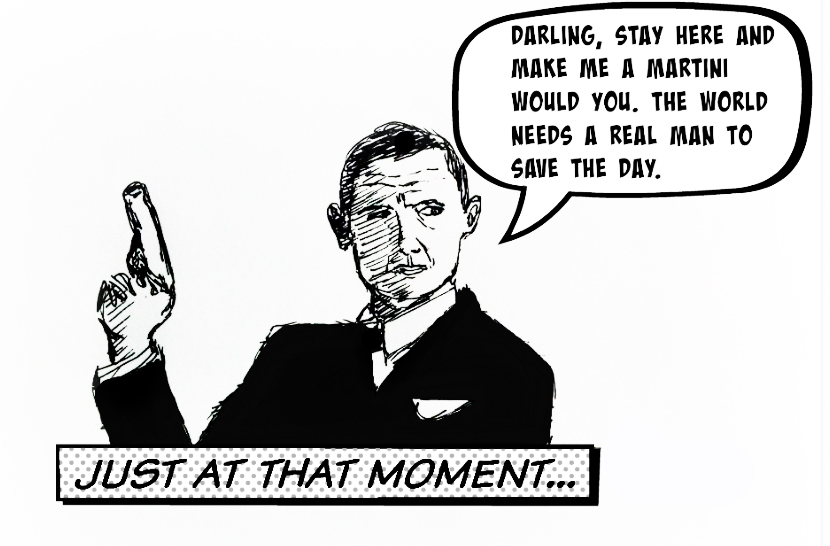It is no mystery that James Bond has a superseding alpha-male ego, backed by his presumptuous sexual advances and licence to kill. However, the largest amount of sexualization and marginalization of female characters does not come from Bond himself, but from the writers, directors, and costume designers of the James Bond franchise.
The opening credit of every Bond film features a dramatic and beautiful song, Mr. Bond shooting a gun, and stunning women—all of whom are scantily clad, nude, or nothing more than a silhouette. This is the timeless preface to every film: James Bond is going to kick some ass and get laid.
In each film, the scarcity of women is all too obvious. The franchise’s most recent instalment, Spectre, features a mere five women: one nameless young woman in Mexico City and another at a board meeting in Rome—who is allowed a few lines to her name—as well as Eve Moneypenny (Naomie Harris); Lucia Sciarra (Monica Bellucci); and Madeleine Swann (Lea Seydoux). The fleeting two-minute interaction with the nameless woman at the beginning is a perfect example of Bond’s reputation as a womanizer and the faceless roles that women play in the franchise. She has no further purpose in the film and is immediately written out. Later on, Moneypenny has already rebuffed Bond’s inevitable advances in previous films and he now treats her as a respected coworker; however, that did not stop the writers from placing a man in her bed and having Bond chastise her for it when calling her in the middle of the night— nor did it stop the costume designers from dressing her in lingerie when answering said call.
Lucia Sciarra—although refreshingly mature compared to the typical ‘Bond Girl’—was painted as weak and vulnerable, and made no more appearances in the film after being seduced and reduced by Bond. In regards to costume design, the viewers’ final impression of Lucia is that of her lounging on her bed in a corset and thigh-high stockings, which is unrealistic for two reasons. The first being that—before becoming intimate with Bond—she was coming from her husband’s’ funeral. It is highly unlikely that a woman in mourning would be wearing a full corset and garter set beneath her clothes. The second unrealistic detail lies with this question: Why would she re-dress herself in the intricate lingerie set after her encounter with Bond just to lounge around her home? She serves no purpose other than as an informant and a sexual object for both Bond and the audience.
Although Madeleine Swann is portrayed as tough, terse, and powerful at times, all is lost when she is captured and tied up for Bond’s rescuing. There is no context to her capture, and she just assumes the ‘damsel in distress’ role to stick with the theme of Bond coming to the rescue and saving a woman in need. What took the sexualization of Madeleine even further was her outfit upon meeting the villain, Ernst Blofeld (Christoph Waltz). She’s given a pair of stilettos and a body-hugging dress with an intricate pattern of swirls and curves bringing attention to her bosom and genitals. This was a not so subtle move by the costume department to once again remind the audience that Madeleine is a woman.
The sexualization and marginalization of women throughout the franchise is ever present in Goldfinger (1964) and Quantum of Solace (2008), where the deaths of two Bond girls were accomplished by covering their naked bodies entirely in gold paint (Goldfinger) or in oil (Quantum of Solace). The stripping down of these women—literally and figuratively—do nothing more than rob the naked dead girls of their identity and dignity.
It is not a secret that the 53-year-old franchise has exploited women for their bodies and marginalized them for their gender ever since the release of Dr. No in 1962, but as time goes on and audiences become more socially conscious, perhaps the viewers will see a greater change in the portrayal of women. Even Daniel Craig himself says that the Bond films have “nothing” to teach us. So buckle up everyone, it’s time for the damsel-in-distress roles to be cut, and for Jane Bond to make her screen debut.








